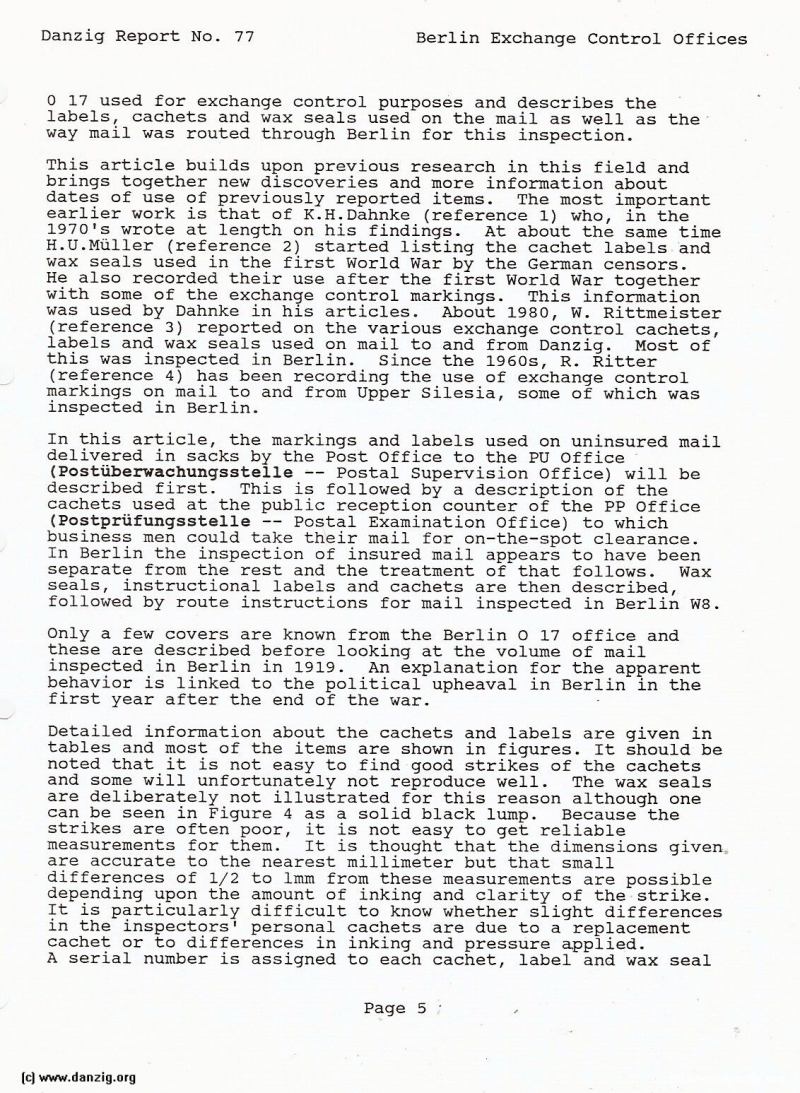
17 used for exchange control purposes and describes the labels, cachets and wax seals used on the mail as well as the way mail was routed through Berlin for this inspection.
This article builds upon previous research in this field and brings together new discoveries and more information about dates of use of previously reported items. The most important earlier work is that of K.H.Dahnke (reference 1) who, in the 1970’s wrote at length on his findings. At about the same time H.U.Müller (reference 2) started listing the cachet labels and wax seals used in the first World War by the German censors. He also recorded their use after the first World War together with some of the exchange control markings. This information was used by Dahnke in his articles. About 1980, W. Rittmeister (reference 3) reported on the various exchange control cachets, labels and wax seals used on mail to and from Danzig. Most of this was inspected in Berlin. Since the 1960s, R. Ritter (reference 4) has been recording the use of exchange control markings on mail to and from Upper Silesia, some of which was inspected in Berlin.
In this article, the markings and labels used on uninsured mail delivered in sacks by the Post Office to the PU Office (Postüberwachungsstelle —- Postal Supervision Office) will be described first. This is followed by a description of the cachets used at the public reception counter of the PP Office (Postprüfungsstelle -— Postal Examination Office) to which business men could take their mail for on—the—spot clearance. In Berlin the inspection of insured mail appears to have been separate from the rest and the treatment of that follows. Wax seals, instructional labels and cachets are then described, followed by route instructions for mail inspected in Berlin W8.
Only a few covers are known from the Berlin 0 17 office and these are described before looking at the volume of mail inspected in Berlin in 1919. An explanation for the apparent behavior is linked to the political upheaval in Berlin in the first year after the end of the war.
Detailed information about the cachets and labels are given in tables and most of the items are shown in figures. It should be noted that it is not easy to find good strikes of the cachets and some will unfortunately not reproduce well. The wax seals are deliberately not illustrated for this reason although one can be seen in Figure 4 as a solid black lump. Because the strikes are often poor, it is not easy to get reliable measurements for them. It is thought that the dimensions given are accurate to the nearest millimeter but that small differences of 1/2 to 1mm from these measurements are possible depending upon the amount of inking and clarity of the strike. It is particularly difficult to know whether slight differences in the inspectors’ personal cachets are due to a replacement cachet or to differences in inking and pressure a.pplied. A serial number is assigned to each cachet, label and wax seal
Danzig Report Vol. 1 - Nr. 77 - October - November - December - 1992, Page 5.
Hits: 4036
Added: 03/07/2015
Copyright: 2025 Danzig.org

